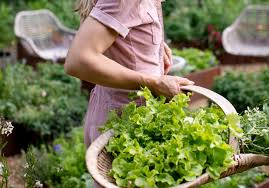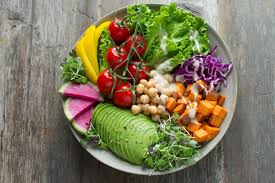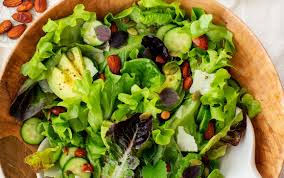In the heart of late spring, as your garden lettuce thrives, the challenge often becomes: What can I add to tonight’s salad to make it unique and exciting? As a salad enthusiast, I’m somewhat of a “salad snob”—spoiled by the freshness and quality of homegrown lettuce that restaurant salads just can’t compete with. Below, I’ve compiled a guide to making the most of your garden lettuce during the spring season, offering tips to keep your salads fresh, flavorful, and far from boring.
Beyond the Salad Bowl: Other Uses for Lettuce
While fresh salads are a go-to, garden lettuce can be used in various ways beyond the bowl. It adds a refreshing crunch to sandwiches, wraps, and tacos. Individual leaves can also serve as wraps for cold salads or even spiced meat or tofu mixtures, inspired by Thai cuisine. Another fun way to use lettuce is by sautéing it—garlic-infused stir-fried lettuce, particularly butterhead varieties, can make a delicious side dish. You can also add lettuce to soups or toss it on the grill for a unique flavor twist.

Harvesting and Cleaning Garden Lettuce
Timing is everything when harvesting lettuce. Early morning or late evening is ideal, as the leaves are most hydrated then. You can either pick individual leaves or harvest entire plants. After picking, rinse the lettuce in cold water. For a thorough clean, submerge it in a clean bowl with more cold water. If you have a salad spinner, it’s the best tool for drying lettuce. If not, place the leaves on a clean kitchen towel, cover them with another towel, and gently pat to remove excess moisture. Check for any debris, and if necessary, clean the leaves again. Once dry, store the lettuce in a plastic bag in the fridge. A quick chilling session (just 30 minutes) will help the leaves crisp up before preparing your salad.

The Essential Salad Spinner
A salad spinner is a must-have for anyone who enjoys fresh garden salads. While I temporarily misplaced mine, I quickly realized how much I relied on it to achieve both clean and crisp salad leaves. For gardeners, it’s worth investing in one—clean and dry lettuce is the key to a great salad.
Crafting Balanced Flavors in Your Salad
When creating a salad, balancing distinct flavors can elevate the entire dish. Here’s my simple approach to achieving that harmony:
- Sharp: Add a tangy element such as vinegar, lemon, orange, radishes, or mustard.
- Sweet: Fruits like strawberries, cherries, raisins, or apples work wonderfully, or use a honey-sweetened dressing.
- Salty: Bring in salty ingredients like cheese, olives, anchovies, or pickled vegetables.
- Aromatic: Fresh herbs, garlic, toasted nuts, or special oils (like walnut or sesame) can add depth and fragrance.
For a more filling salad, consider adding cooked grains (like quinoa or farro), meats, beans, or potatoes to turn your salad into a complete meal.
Visual Appeal: Adding a Splash of Color
The beauty of a garden salad often lies in its vibrant colors. As you near completion, don’t forget to add a pop of color by tossing in edible flowers from your garden. Petals from Johnny jump-ups, calendulas, or herbs like basil or chives can transform a salad into a visual masterpiece.

By following these tips, you can ensure your garden lettuce salad is not only fresh and flavorful but also creative and satisfying. Whether you’re looking for a quick side dish or a main course, there’s no limit to the delicious combinations you can create with garden lettuce. Happy gardening—and happy eating!
